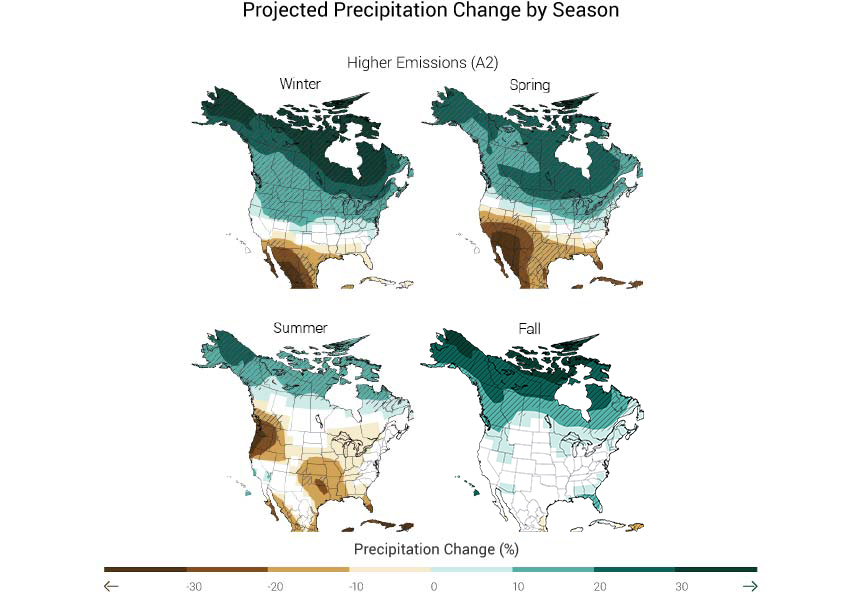Climate Change And The Future Of Rainfall In Western Massachusetts

Table of Contents
Projected Changes in Rainfall Patterns
Climate models predict significant alterations to rainfall patterns in Western Massachusetts in the coming decades. While the overall annual rainfall amount might not change drastically, the intensity and frequency of rainfall events are expected to shift dramatically. We can anticipate more intense downpours interspersed with longer periods of drought. This translates to a heightened risk of flash flooding and increased strain on water resources during dry spells.
- Data from Climate Models: Projections from the latest IPCC reports and regional climate models suggest an increase in the frequency of heavy precipitation events in Western Massachusetts, potentially exceeding current infrastructure capacity.
- Manifestations of Change: This translates to increased risks of flooding in low-lying areas, damage to infrastructure, and more frequent occurrences of agricultural drought. Summer thunderstorms are likely to become more intense, leading to localized flooding and soil erosion. Spring snowmelt will likely occur earlier and more rapidly, impacting water availability throughout the year.
- Seasonal Impacts: Changes will vary across seasons. While spring might see earlier snowmelt and increased risk of flooding, summer could experience more intense and less predictable rainfall, affecting crop irrigation. Autumn might see prolonged dry spells, impacting fall harvests.
Impacts on Water Resources
Altered rainfall patterns pose significant challenges to Western Massachusetts' water resources. The increased intensity of rainfall events can overwhelm existing water management infrastructure, leading to overflows and contamination. Conversely, prolonged dry periods can deplete reservoirs and aquifers, leading to water scarcity. This impacts drinking water supplies, irrigation for agriculture, and industrial processes.
- Challenges for Water Management: Existing dams and reservoirs might need upgrades to handle more intense rainfall events. Water treatment plants might need improvements to manage increased runoff and potential contamination.
- Impact on Ecosystems: Changes in water availability will dramatically impact local ecosystems. Rivers and streams may experience more frequent and severe fluctuations in flow, affecting aquatic life. Wetlands, vital for water filtration and biodiversity, may be negatively impacted by both drought and flooding.
- Potential for Conflict: Competition for dwindling water resources during droughts could lead to conflicts between different users, such as farmers, municipalities, and industries.
Effects on Agriculture and Ecosystems
The agricultural sector in Western Massachusetts is particularly vulnerable to changes in rainfall patterns. Unpredictable rainfall can negatively affect crop yields, livestock production, and overall farm profitability. Furthermore, shifts in rainfall affect the delicate balance of local ecosystems, impacting plant and animal communities.
- Vulnerable Crops and Ecosystems: Certain crops, like apples and maple syrup, are highly sensitive to temperature and rainfall variations. Similarly, sensitive ecosystems like the Berkshire meadows and forests are susceptible to changes in water availability.
- Adaptation Strategies: Farmers might need to adopt drought-resistant crops, improve irrigation techniques, and implement water conservation strategies. Conservationists can focus on restoring degraded habitats and promoting biodiversity to enhance ecosystem resilience.
- Invasive Species: Changes in rainfall patterns might create favorable conditions for the spread of invasive plant and animal species, further disrupting local ecosystems.
Mitigation and Adaptation Strategies
Addressing the challenges posed by climate change and the future of rainfall in Western Massachusetts requires a two-pronged approach: mitigation and adaptation. Mitigation focuses on reducing greenhouse gas emissions to slow down climate change, while adaptation involves preparing for and managing the inevitable impacts.
- Local Initiatives and Policies: Local governments can implement policies to promote renewable energy, improve energy efficiency, and support sustainable land management practices.
- Role of Individuals and Communities: Individuals can contribute by reducing their carbon footprint, conserving water, and supporting local initiatives aimed at climate change mitigation and adaptation.
- Technological Solutions: Investing in advanced water management technologies, such as rainwater harvesting systems and improved irrigation techniques, can enhance resilience to changing rainfall patterns.
Conclusion: Understanding Climate Change and the Future of Rainfall in Western Massachusetts
The projected changes in rainfall patterns in Western Massachusetts due to climate change pose significant challenges to water resources, agriculture, and ecosystems. Understanding these changes and their potential impacts is crucial for developing effective mitigation and adaptation strategies. We must act now to reduce greenhouse gas emissions and implement measures to build resilience to a future with more unpredictable rainfall. Learn more about how climate change is affecting your community and take action to protect the future of rainfall in Western Massachusetts. Your engagement is vital in shaping a more sustainable and resilient future for our region.

Featured Posts
-
 Northeast Ohio Braces For Strong Thunderstorms Latest Forecast
May 31, 2025
Northeast Ohio Braces For Strong Thunderstorms Latest Forecast
May 31, 2025 -
 Navigation Et Plaisance Profiter Pleinement D Un Jour En Mer
May 31, 2025
Navigation Et Plaisance Profiter Pleinement D Un Jour En Mer
May 31, 2025 -
 Cd Projekt Red On Cyberpunk 2 Development Updates And Expectations
May 31, 2025
Cd Projekt Red On Cyberpunk 2 Development Updates And Expectations
May 31, 2025 -
 Federal Probe Into Impersonation Of White House Chief Of Staff Susie Wiles
May 31, 2025
Federal Probe Into Impersonation Of White House Chief Of Staff Susie Wiles
May 31, 2025 -
 The Truth About Ai Learning A Path To Responsible Ai Practices
May 31, 2025
The Truth About Ai Learning A Path To Responsible Ai Practices
May 31, 2025
